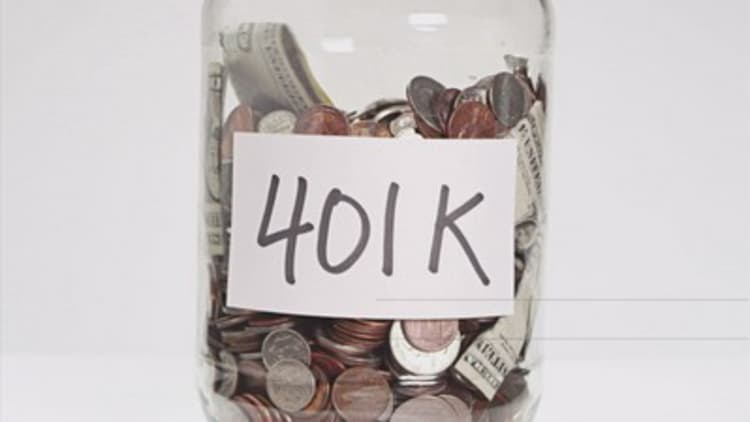Are you making the most of your 401(k)? Better check.
In recent years, companies have been making improvements to their workplace retirement plans, according to a new survey by global advisory firm Willis Towers Watson. Among other changes, many companies have boosted employer contributions, added Roth 401(k) options, and made fees more transparent.
The survey polled 349 large and midsize U.S. companies that offer defined contribution retirement plans.
It's imperative for companies to strengthen defined contribution plans such as the 401(k) to help employees with long-term financial security, said Gregg Levinson, a senior retirement consultant at Willis Towers Watson.
"[Defined contribution] was never built as the primary retirement source," he said.
Here are some of the changes companies are making, and how employees can take advantage.
Employer contributions
One in 4 employers in the Willis Towers Watson survey had increased their plan contributions in the past five years. Of those, 60 percent did so by increasing the employer match.
"You want to make sure any free contribution the company is offering you, you maximize. Otherwise you're leaving money on the table," said Victoria Fillet-Konrad, co-founder at Blueprint Financial Planning in Hoboken, New Jersey.
It's a misstep plenty of workers make: One in 5 aren't contributing enough to get the full match, according to separate analyses from Alight and Fidelity. Younger workers are more prone to miss out. (See chart below.)
Employee savings by age
| Employee age | Below match threshold | At match threshold | Above match threshold |
|---|---|---|---|
| 20-29 | 29% | 38% | 34% |
| 30-39 | 25% | 34% | 41% |
| 40-49 | 21% | 29% | 50% |
| 50-59 | 16% | 25% | 58% |
| 60+ | 14% | 26% | 61% |
Source: SOURCE: Alight Solutions
Roth features
Seven in 10 employers in the Willis Towers Watson survey now offer a Roth option within their 401(k) plans. That's up from 54 percent who did in 2014 and 46 percent in 2012.
With a Roth 401(k), workers make contributions with after-tax money. Those funds can be withdrawn tax-free in retirement. With a traditional 401(k), you make pre-tax contributions, but then pay taxes at withdrawal.
Advisors say a Roth can be an especially smart move for young workers who currently fall in a low tax bracket and have decades left in the workforce to let those tax-advantaged funds grow.

"If their current tax rate is 15 percent and they feel their income will go up and tax rate will go to 30 percent, then it's better that they do a Roth now because that saves them the tax money," said J.J. Fields, managing director at FMB Retirement Services in Westlake Village, California.
Target-date fund offerings
A whopping 93 percent of employers in the Willis Towers Watson survey use target-date funds — which automatically adjust your portfolio allocation as you approach retirement — as the default investment for workers who don't make their own selections. That's up from 86 percent in 2014 and 64 percent in 2009.
TDFs can be a great option.
"If you are not educated enough to manage your portfolio or don't want to spend the time managing your portfolio, pick a target date fund," Fillet-Konrad said.
Average target-date returns last year
| Year | 2017 return |
|---|---|
| 11.29 percent | |
| 12.46 percent | |
| 14.67 percent | |
| 16.57 percent | |
| 18.43 percent | |
| 19.52 percent | |
| 20.51 percent | |
| 21.08 percent | |
| 20.67 percent | |
| US Fund Target-Date 2060+ | 21.27 percent |
Source: Source: Morningstar Direct
But employees should look at other options if their risk tolerance or expected longevity doesn't correspond with what the fund expects for their age, Fields said.
"I have 80-year-old [clients] that have a higher risk tolerance than 20-year-olds," he said.
More from Personal Finance:
Bad Social Security advice cost recipients $131 million
IRS debuts new tax withholding tool. Here's what you'll pay
4 strategies to cut your taxes under the new law


